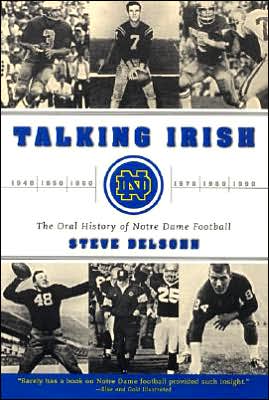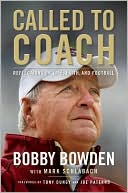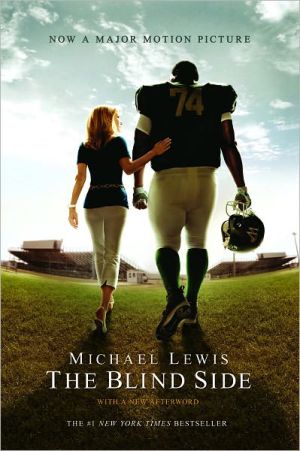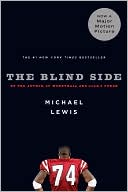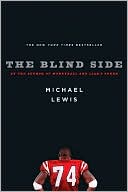Talking Irish: The Oral History of Notre Dame Football
An entertaining fusion of fact, legend, and lore, Notre Dame football has transcended the boundaries of the sport and the university to become a time-honored American tradition. For its legions of devoted fans and alumni, Talking Irish vividly captures it all: the exhilarating wins, the stunning defeats, the tumultuous coaching changes, and the celebrated mystique that surrounds this beloved football dynasty.\ With never-before-told anecdotes, this candid and revealing oral history — the...
Search in google:
Talking Irish tells the storied -- and sometimes troubled -- history of Notre Dame football. Through interviews with former players and coaches, Steve Delsohn paints a portrait of a legendary football program and the champions who ran it and played for it. Publishers Weekly There is no end of books about football at Notre Dame, but this contribution is exceptional because so many quarters have added their voices. The result is a largely honest, well-rounded history that gives readers the benefit of the view from the administration building, the coach's office and the players' locker room. It concentrates primarily on the coaching from 1934 through 1996, emphasizing the regimes of Frank Leahy, Terry Brenna, Ara Parseghian, Dan Devine, Gerry Faust, and Lou Holtz, all of whom felt constant pressure, not just to win but to win by huge margins, and who were eventually flattened by the pressure. The iron-handed, velvet-gloved maneuvers of Fathers Hesburgh and Joyce, who ran the sports program for most of the decades covered, also give the lie to any pretense of democracy in the programs, especially when a coach decided to "retire." The input from players like Angelo Bertelli and Joe Montana, most of whom appear to have been very forthright with Delsohn (co-author with Jim Brown of Out of Bounds), rounds out the pictures of the hard-driving, soft-spoken Leahy and the quiet but efficient Holtz. The coach who comes off worst is Faust, who had triumphed as a high school coach but flopped at the college level and is depicted here as a priggish backstabber who blamed all his troubles on subordinates. In short, there are interesting revelations on every page in this evenhanded study. 16 pages b&w photos not seen by PW. Editor, Patricia Grader; agent, David Black. Author tour. (Sept.)
Chapter One\ \ \ Shadow of the Rock\ 1940-1941\ \ \ On December 7th, 1940, during the season finale at Southern California, Notre Dame coach Elmer Layden charged onto the field to protest what he felt was a rotten call. But Layden didn't stop there. After blistering the refs, he screamed at USC coach Howard Jones.\ A normally genial man, Layden had finally submitted to the abnormal pressure of coaching Notre Dame football. This pressure had increased for nine straight years — ever since March 31, 1931, the stunning day Knute Rockne died in an airplane crash.\ In the hard economic times of the 1920s, Rockne had brought the school glamour and fame. He envisioned a Notre Dame Stadium, then twisted enough arms to see it get built in 1930. Rockne scheduled road games in New York City, Chicago, Los Angeles, Baltimore, and Philadelphia, which in turn created the so-called subway alumni. These were the millions of fans who never attended the university, but had passionate feelings for its football team. During the 1920s, many of these fans were poor, Catholic, and Irish. As they battled prejudice and struggled to join the country's middle class, they were inspired by Notre Dame's football success.\ Then there were the remarkable statistics. Rockne's teams lost only 12 games in 13 years, posted five unbeaten seasons and won three national titles. His lifetime winning percentage of .881 (105-12-5) is still the highest in both college and pro football.\ After Rockne's shocking death at age 43 — his small commercial planewent into a lethal spin over Bazaar, Kansas — Heartley (Hunk) Anderson replaced him. Anderson had starred at guard under Rockne and still ranks among Notre Dame's all-time hard guys. In one game against Army, after George Gipp got kneed by a Cadet, Anderson dropped the Cadet with one good shot to the face.\ Never the smooth politician Rockne had been, Anderson swore like a trooper and lacked head coaching skills. His three-year-mark of 16-9-2, including 3-5-1 his final season, got Anderson fired on December 9, 1933.\ Next came the ex-Four Horseman, Elmer Layden. As Irish head coach from 1934-1940, Layden won nearly eight of every ten games. At most other schools, this would have enhanced his legend. But not at a Notre Dame still mourning Rockne, whose three national titles had set a towering standard.\ Layden didn't win any championships. So in February 1941, two months after his outburst at USC, he resigned before his imminent dismissal. Then it was Frank Leahy's turn to grapple with Rockne's ghost.\ Leahy grew up, aptly, in Winner, South Dakota. After playing tackle on Rockne's last three Notre Dame teams, he returned to South Bend fresh from an 11-0 season at Boston College. Leahy, at age 33, had only been a head coach for two seasons. Yet he was college football's hottest name.\ Leahy was also a slew of contradictions. He dressed expensively in double-breasted dark suits, wide-brim hats and bow ties. But Leahy worked such late hours, he often slept on campus and wore the same rumpled clothes for days at a time. Leahy always displayed a certain bloodlust, both in his famously violent practice sessions and earlier as a promising young boxer. Yet when Leahy spoke, he sounded more platitudinous than pugilistic.\ "Approximately one month ago, I received the greatest surprise of my entire life," Leahy told the Notre Dame student body in his first speech to them in spring 1941. "For it was just about four weeks ago that the authorities at the University of Notre Dame saw fit to ask me to coach at my Alma Mater. My vocabulary lacks the words to describe fittingly the monumental feeling of joy which permeated my entire body and soul."\ The greatest paradox was Leahy's transformation during games. Fanatically organized and a master tactician, he was a brilliant practice-field coach. But Leahy got so emotional on Saturdays, he could be more of a sideshow than a leader. Times like these for instance:\ \ Long snapper Jim Schrader botched a key extra point, and Leahy grabbed him and screamed, "You'll burn in hell for this!"\ \ \ \ \ An Irish player hit an opponent so hard he knocked himself unconscious. Then, as the trainer ran up with smelling salts, Leahy sniffed them himself.\ \ \ \ \ Notre Dame and USC were tied 14-14 late in the fourth quarter. Thinking the Irish were winning, Leahy instructed his offense to run out the clock. Notre Dame wasted a key timeout in its confusion, the game ended 14-14, and the tie cost the Irish the 1948 national championship.\ \ \ \ Still, these incidents happened later in Leahy's career, when the strain of the job may have taken a mental toll. In 1941, according to freshman quarterback George Dickson, it was Leahy's obsession with winning that made him the perfect candidate for Notre Dame.\ George Dickson: "Leahy and I got close over the years. Probably because I went into coaching myself. Well, Leahy told me himself what happened when Notre Dame hired him.\ "He met Father John Cavanaugh in Albany, New York. Cavanaugh was the school's vice president, and the Notre Dame VP is always in charge of athletics. So Cavanaugh goes over to this hotel. He signs into a room under an assumed name. Leahy also checks in under an assumed name. Leahy, remember, was still at Boston College at the time. This was his job interview.\ "Now this is what the old man told me himself. He said he told Cavanaugh, 'Well, Father, Elmer Layden's been doing a pretty good job.' Cavanaugh said, 'Yes, Frank, you're right. But we want winning teams here. All winning, Frank.'\ "So Leahy said, 'Tell me, Father. Are you prepared to meet the demands of national championship football?' Cavanaugh said, 'Yes, we are prepared. At all levels, Frank.'\ "See, this was very different. Because after..."\ Talking Irish. Copyright © by Steve Delsohn. Reprinted by permission of HarperCollins Publishers, Inc. All rights reserved. Available now wherever books are sold.
\ Publishers Weekly - Publisher's Weekly\ There is no end of books about football at Notre Dame, but this contribution is exceptional because so many quarters have added their voices. The result is a largely honest, well-rounded history that gives readers the benefit of the view from the administration building, the coach's office and the players' locker room. It concentrates primarily on the coaching from 1934 through 1996, emphasizing the regimes of Frank Leahy, Terry Brenna, Ara Parseghian, Dan Devine, Gerry Faust, and Lou Holtz, all of whom felt constant pressure, not just to win but to win by huge margins, and who were eventually flattened by the pressure. The iron-handed, velvet-gloved maneuvers of Fathers Hesburgh and Joyce, who ran the sports program for most of the decades covered, also give the lie to any pretense of democracy in the programs, especially when a coach decided to "retire." The input from players like Angelo Bertelli and Joe Montana, most of whom appear to have been very forthright with Delsohn (co-author with Jim Brown of Out of Bounds), rounds out the pictures of the hard-driving, soft-spoken Leahy and the quiet but efficient Holtz. The coach who comes off worst is Faust, who had triumphed as a high school coach but flopped at the college level and is depicted here as a priggish backstabber who blamed all his troubles on subordinates. In short, there are interesting revelations on every page in this evenhanded study. 16 pages b&w photos not seen by PW. Editor, Patricia Grader; agent, David Black. Author tour. (Sept.)\ \ \ \ \ Library JournalYou can tell that football season will soon be arriving when you see the first of the many new books published each fall about Notre Dame football, to the delight of Fighting Irish fans everywhere. This one differs from most books about the Notre Dame football in two ways. First, it is not uniformly favorable; if a wart is seen, it is picked at and examined. Second, it does not offer an institutional view of Notre Dame football but rather the observations of former coaches and players. The book's six sections correspond with decades in Notre Dame football from the 1940s through the 1990s. While most of the coaches' observations are relatively nondescript, the players make excellent comments, fairly and revealingly describing both the high and low points of the football program over the past 60 years. Delsohn, who collaborated on Emmitt Smith's autobiography (The Emmitt Zone, LJ 6/15/94), has a winner here. Whether you love or hate Notre Dame football, this is an interesting and highly recommended book.--William O. Scheeren, Hempfield Area H.S. Lib., Greensburg, PA\ \
